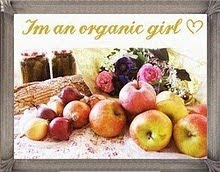

Lavender (Lavandula) from the Latin Lavare,
meaning “to wash”
(Also known as True Lavender & Garden Lavender)
(Also known as True Lavender & Garden Lavender)
As far back as the Middle Ages, This shrubby plant was
used as a popular home remedy for stress, hysteria, menopausal problems headache, and even palsy convulsions, and fainting . Even in modern times, lavender is an important ingredient in smelling salts.
Researchers have found that the fragrant, volatile, oil in lavender blossoms which contains more than 100 chemical compounds. Lavender does calm the nervous system.
Lavender is an incredibly versatile herb, for cooking. In today’s upscale restaurants ,
edible flowers are making a comeback as enhancements to both the flavor and appearance of food.
As a member of the same family as many of our most popular herbs, it is not surprising that lavender is edible and that its use in food preparation is returning.
Flowers and leaves can be used fresh, and both buds and stems can be used dried. Lavender is a member of the mint family and is close to rosemary, sage, and thyme. It is best used with fennel, oregano, rosemary, thyme, sage, and savory.
Lavender has a sweet, floral flavor, with lemon and citrus notes. The potency of the lavender flowers increases with drying. In cooking, use 1/3 the quantity of dried flowers to fresh. The key to cooking with lavender is to experiment; start out with a small amount of flowers, and add more as you go. Adding too much lavender to your recipe can be like eating perfume and will make your dish bitter.
Dried culinary lavender can be used to make flavored sugar, dressings, Herbs de Provence and lavender lemon pepper. Cooking with lavender is one of the ways to bring the sparkle of summer back into eating.
Researchers have found that the fragrant, volatile, oil in lavender blossoms which contains more than 100 chemical compounds. Lavender does calm the nervous system.
Lavender is an incredibly versatile herb, for cooking. In today’s upscale restaurants ,
edible flowers are making a comeback as enhancements to both the flavor and appearance of food.
As a member of the same family as many of our most popular herbs, it is not surprising that lavender is edible and that its use in food preparation is returning.
Flowers and leaves can be used fresh, and both buds and stems can be used dried. Lavender is a member of the mint family and is close to rosemary, sage, and thyme. It is best used with fennel, oregano, rosemary, thyme, sage, and savory.
Lavender has a sweet, floral flavor, with lemon and citrus notes. The potency of the lavender flowers increases with drying. In cooking, use 1/3 the quantity of dried flowers to fresh. The key to cooking with lavender is to experiment; start out with a small amount of flowers, and add more as you go. Adding too much lavender to your recipe can be like eating perfume and will make your dish bitter.
Dried culinary lavender can be used to make flavored sugar, dressings, Herbs de Provence and lavender lemon pepper. Cooking with lavender is one of the ways to bring the sparkle of summer back into eating.
Lavender Ice Cream
3/4 cup honey
1 teaspoon dried lavender placed in a tea ball or gauze
1 cup half and half
2 cups heavy cream
7 egg yolks
Pour the half and half and the cream into a heavy sauce pan. Add the lavender to this mixture and warm for about 5 minutes. Remove the lavender flowers. Wisk the egg yolks in a bowl until they are frothy. Slowly pour the about half of the warm cream into the mixture of egg yolks as you wisk continuously. Combine the remainder of the yolk and cream mixture into the saucepan and continue to heat on low (stirring constantly) for about 5 minutes. Strain the mixture into a bowl and wisk in the honey. Chill the mixture and then freeze according to the instructions on your ice cream maker.









1 comment:
One of my favorite smells!
Post a Comment